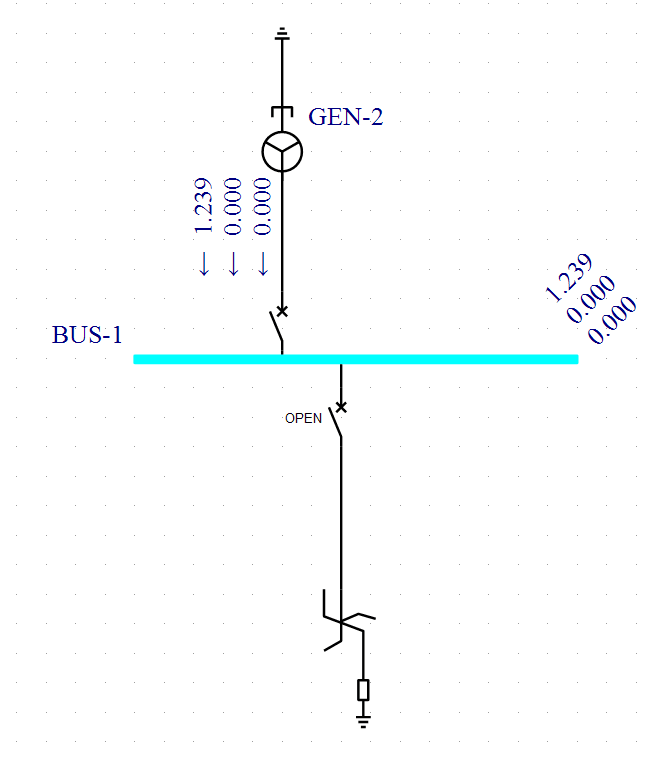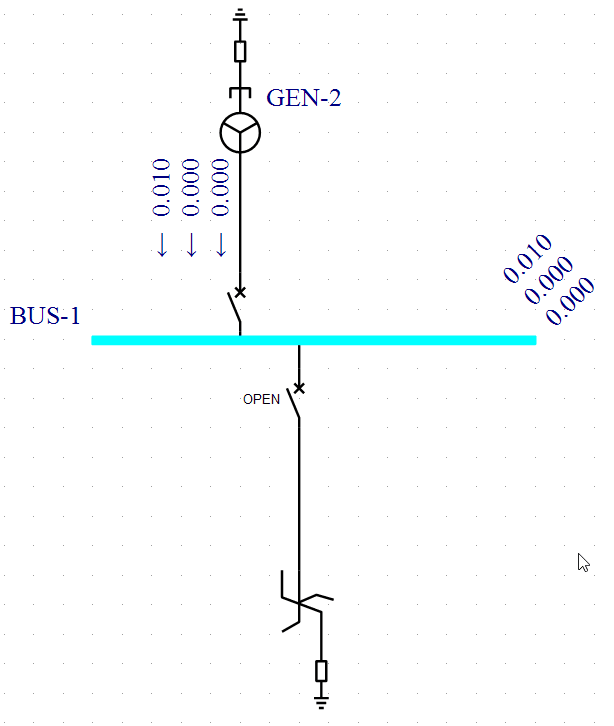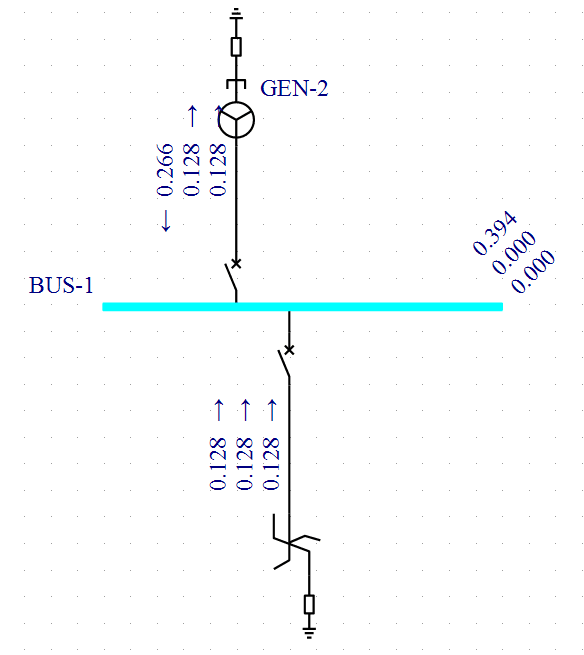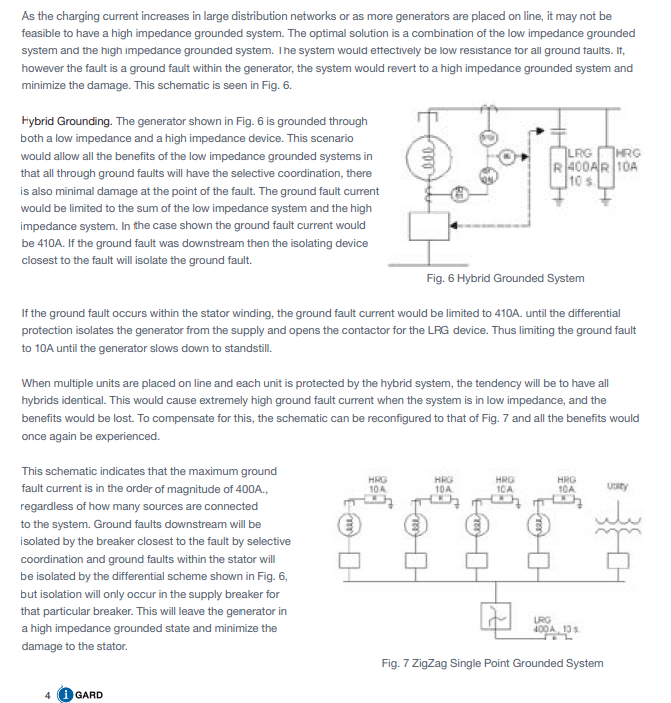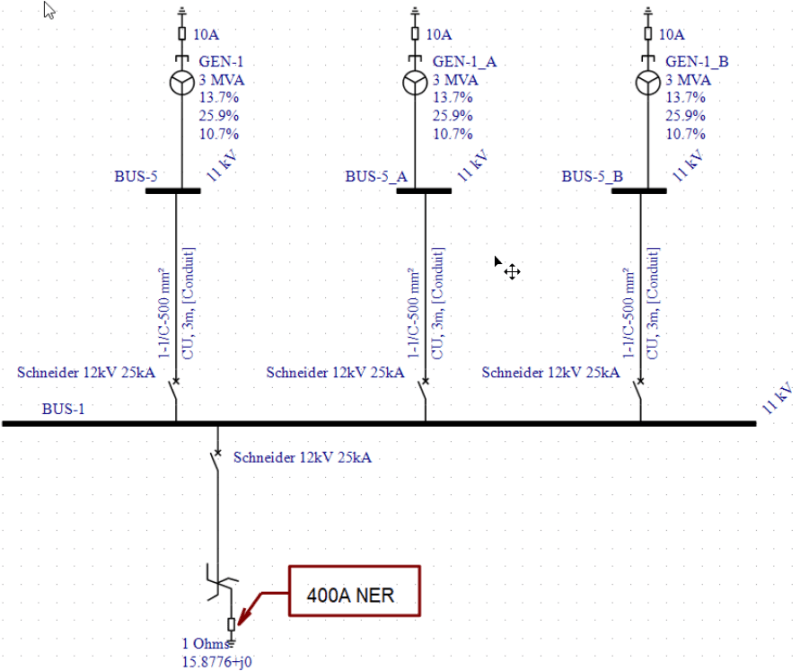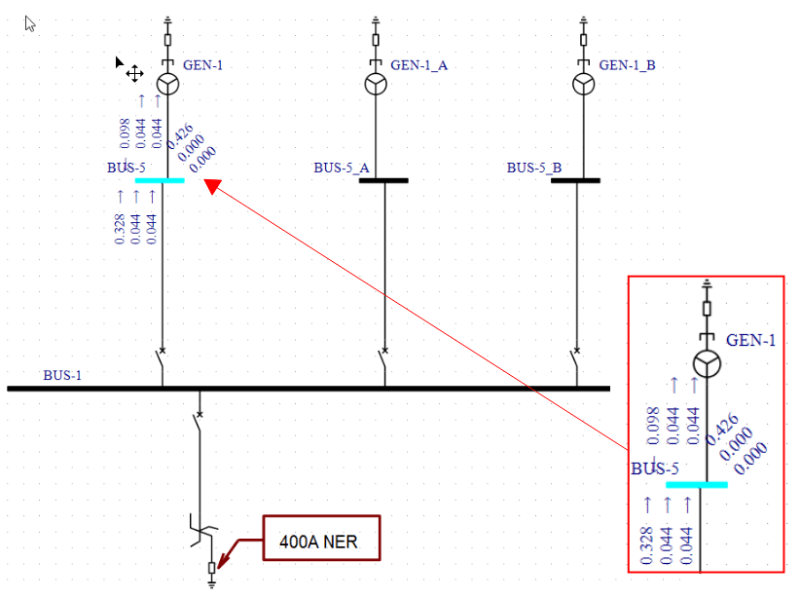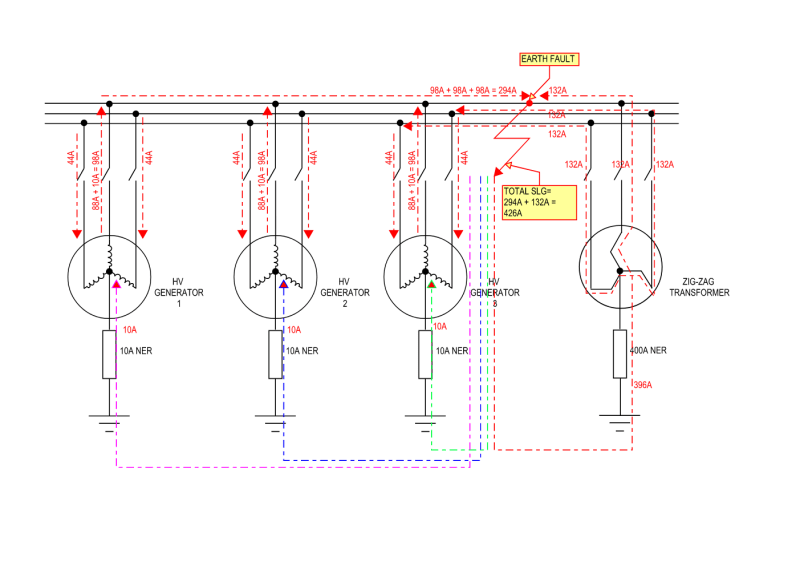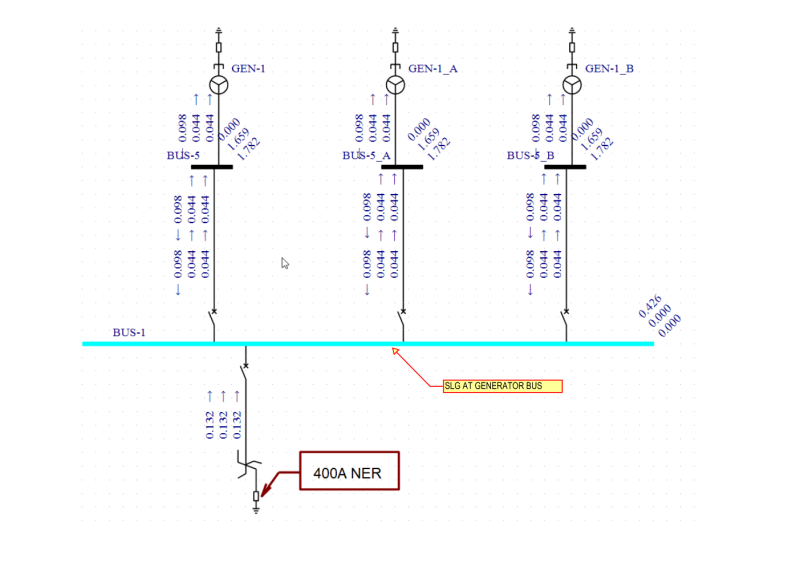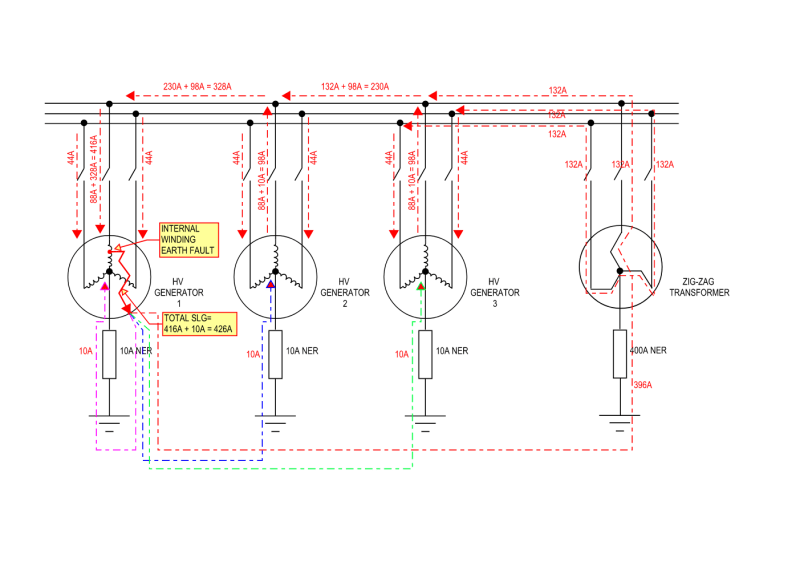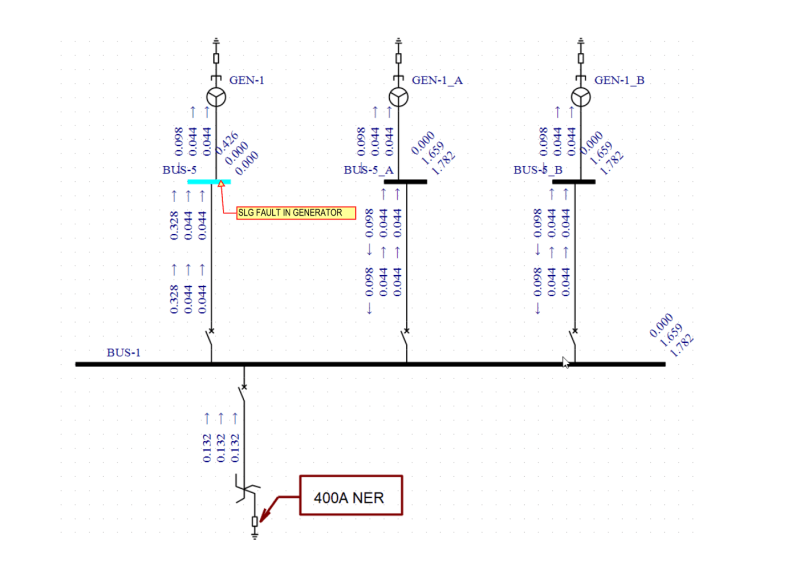Hi all,
I have a system with 3 off 11kV 2.5MVA emergency standby generators that will be supplying emergency power to a critical facility when the network power from the utility is disrupted.
The connections go like this:
3 off 11kV generators -> 11kV generator bus -> 11kV ring mains serving various substations in the ring.
In terms of earthing strategy this is what I am proposing:
1) Each of the 11kV generator to be provided with an NER sized to limit earth fault current to 10A - to limit damage to the stator during an earth fault, esp once the field is disconnected and the machine is slowing down - my understanding is that this is the time where the stator takes the most damage.
2) To handle normal earth fault within the 11kV network, a zigzag transformer with an NER sized to earth fault current of 400A will be used. This zigzag transformer will be connected to the 11kV generator bus.
3) The generator bus will be provided with a circuit breaker such that it is disconnected from the network when the power supply from the authority is live - otherwise the zigzag transformer will become a remote earth to the supply authority's incoming feeder.
I have checked the cable capacitance charging current of the 11kV network and the extent of this charging current is low, given the physical length of the cables are not really that long.
Could I please gather some comments/feedback if the above earthing strategy for the 11kV generator is sound?
Thanks
Tofu
I have a system with 3 off 11kV 2.5MVA emergency standby generators that will be supplying emergency power to a critical facility when the network power from the utility is disrupted.
The connections go like this:
3 off 11kV generators -> 11kV generator bus -> 11kV ring mains serving various substations in the ring.
In terms of earthing strategy this is what I am proposing:
1) Each of the 11kV generator to be provided with an NER sized to limit earth fault current to 10A - to limit damage to the stator during an earth fault, esp once the field is disconnected and the machine is slowing down - my understanding is that this is the time where the stator takes the most damage.
2) To handle normal earth fault within the 11kV network, a zigzag transformer with an NER sized to earth fault current of 400A will be used. This zigzag transformer will be connected to the 11kV generator bus.
3) The generator bus will be provided with a circuit breaker such that it is disconnected from the network when the power supply from the authority is live - otherwise the zigzag transformer will become a remote earth to the supply authority's incoming feeder.
I have checked the cable capacitance charging current of the 11kV network and the extent of this charging current is low, given the physical length of the cables are not really that long.
Could I please gather some comments/feedback if the above earthing strategy for the 11kV generator is sound?
Thanks
Tofu

